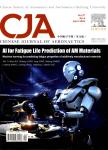A novel surface mesh deformation method for handling wing-fuselage intersections
A novel surface mesh deformation method for handling wing-fuselage intersections作者机构:Fluid Dynamics Branch National Institute for Aerospace Technology (INTA) Ctra. De Ajalvir km. 4.5 28850 Torrejon de Ardoz Spain Engineering Department lngenieria de Sistemas para la Defensa de Espana (ISDEFE-INTA) Ctra. De Ajalvir km. 4.5 28850 Torrejon de Ardoz Spain Technical University of Madrid (UPM) Ronda de Valencia 3 28012 Madrid Spain
出 版 物:《Chinese Journal of Aeronautics》 (中国航空学报(英文版))
年 卷 期:2017年第30卷第1期
页 面:264-273页
核心收录:
学科分类:080103[工学-流体力学] 08[工学] 080104[工学-工程力学] 0802[工学-机械工程] 0825[工学-航空宇航科学与技术] 0801[工学-力学(可授工学、理学学位)]
主 题:Aerodynamic shape optimization Computational fluid dynamics Computer-assisted design Geometry parameterizationMesh deformation Non-Uniform Rational B-Splines
摘 要:This paper describes a method for mesh adaptation in the presence of intersections, such as wing-fuselage. Automatic optimization tools, using Computational Fluid Dynamics(CFD) simulations, face the problem to adapt the computational grid upon deformations of the boundary surface. When mesh regeneration is not feasible, due to the high cost to build up the computational grid, mesh deformation techniques are considered a cheap approach to adapt the mesh to changes on the geometry. Mesh adaptation is a well-known subject in the literature; however, there is very little work which deals with moving intersections. Without a proper treatment of the intersections,the use of automatic optimization methods for aircraft design is limited to individual *** proposed method takes advantage of the CAD description, which usually comes in the form of Non-Uniform Rational B-Splines(NURBS) patches. This paper describes an algorithm to recalculate the intersection line between two parametric surfaces. Then, the surface mesh is adapted to the moving intersection in parametric coordinates. Finally, the deformation is propagated through the volumetric mesh. The proposed method is tested with the DLR F6 wing-body configuration.



